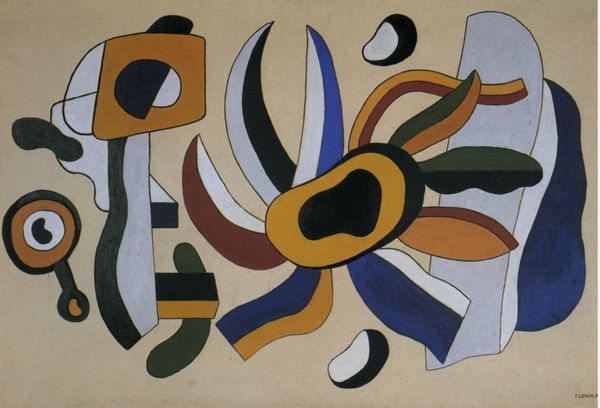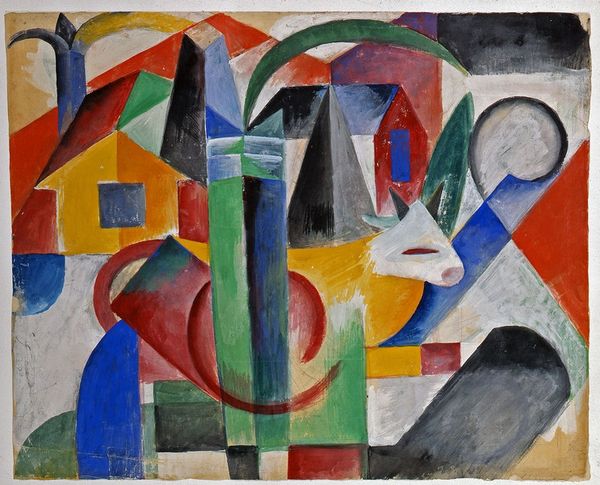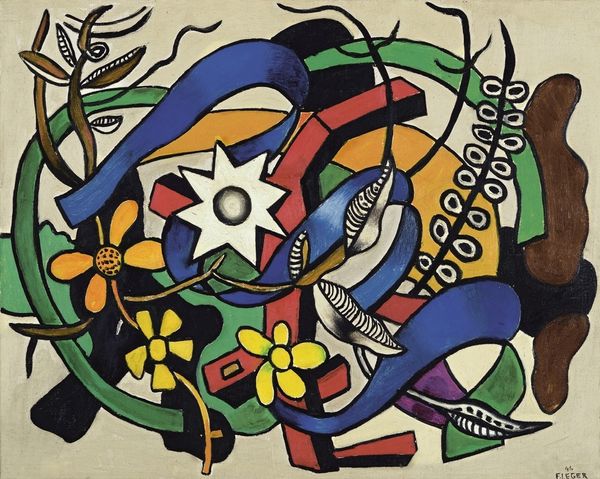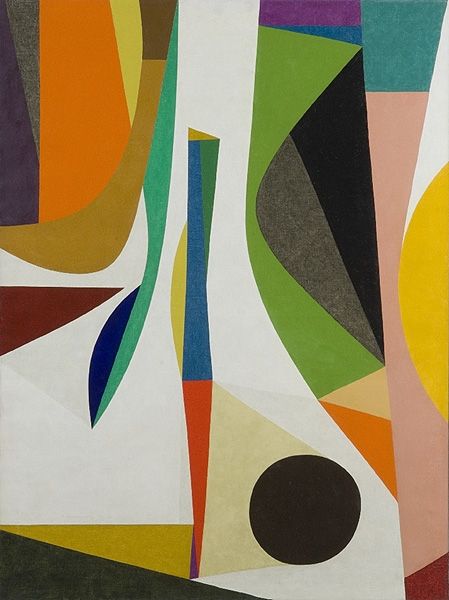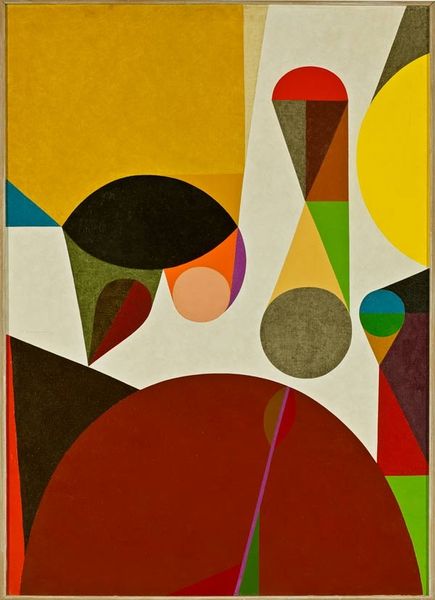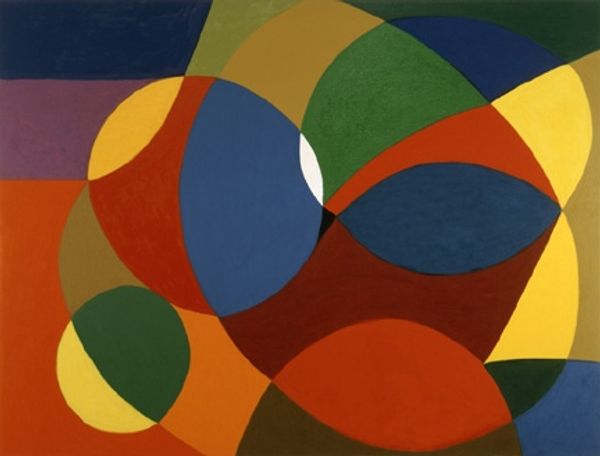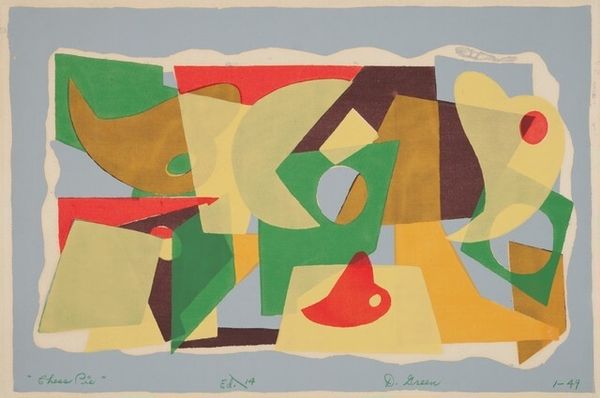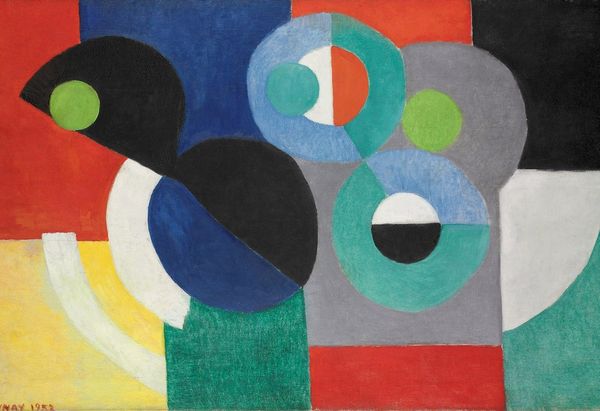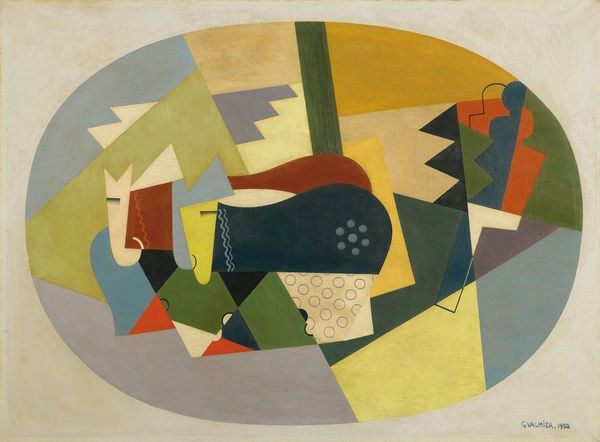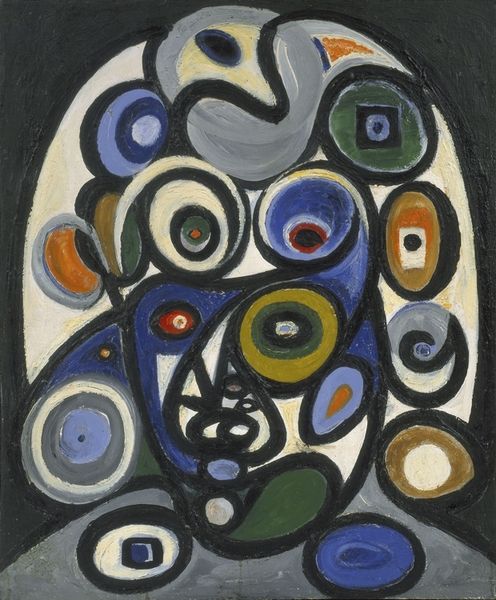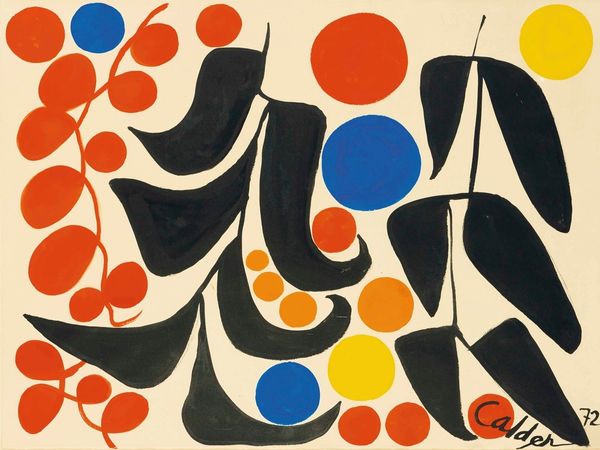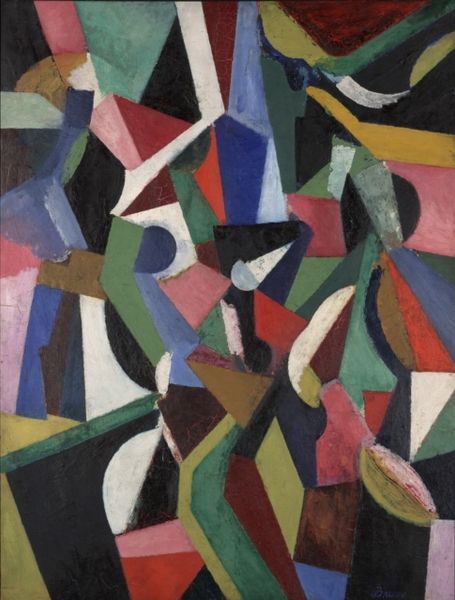
painting, oil-paint
#
cubism
#
painting
#
oil-paint
#
abstract
#
geometric
#
abstraction
#
modernism
Copyright: Modern Artists: Artvee
Curator: Here we have Fernand Léger’s “Les deux étoiles de mer,” or “The Two Starfish,” painted in 1937. What strikes you most about it? Editor: Well, first, it’s surprisingly playful. The forms are abstract, yet those bright yellows, blues, reds—they create a real sense of buoyancy. There is such optimism in the execution of color. Curator: Léger was indeed fascinated by the potential of colour and form to communicate directly. Remember that he worked at a time of tremendous social upheaval. To what extent do you see reflections of such tensions? Editor: He sought to create a visual language accessible to all. The simplification of forms—geometric shapes combined with biomorphic suggestions—was about reflecting the industrialized world, a kind of embrace rather than rejection, isn't it? It’s certainly a hopeful counterpoint to the grim realities of pre-war Europe. However, the very abstraction removes the personal. What exactly is he trying to suggest in his visual language? Curator: Perhaps the universality he desired involved liberating forms from traditional narratives, so we might construct our own. Consider the role of geometric abstraction within the broader social landscape of the era; its connections with utopian ideals. Editor: You’re right. This was a period hungry for new ways of seeing. These stark lines and primary hues offered, or rather promised, such clarity. There are so many questions I have. Why the specific palette? Why title the piece "starfish" when we can’t explicitly identify the ocean? Curator: Perhaps he invites a dialogue between nature and machine? His paintings often juxtapose the organic with the mechanical, alluding to the increasing industrialization of modern life. Perhaps it's a harmonious vision of how those things can coexist. It's certainly an attempt to bring forward positivity and optimism. Editor: The painting feels grounded and optimistic, but the context of its creation provides so many alternative viewpoints, so many paths one could take. I have a newfound respect for the work. Curator: Indeed. It’s precisely those complex tensions that render the piece so compelling, it creates dialogue between the object and the audience.
Comments
No comments
Be the first to comment and join the conversation on the ultimate creative platform.
